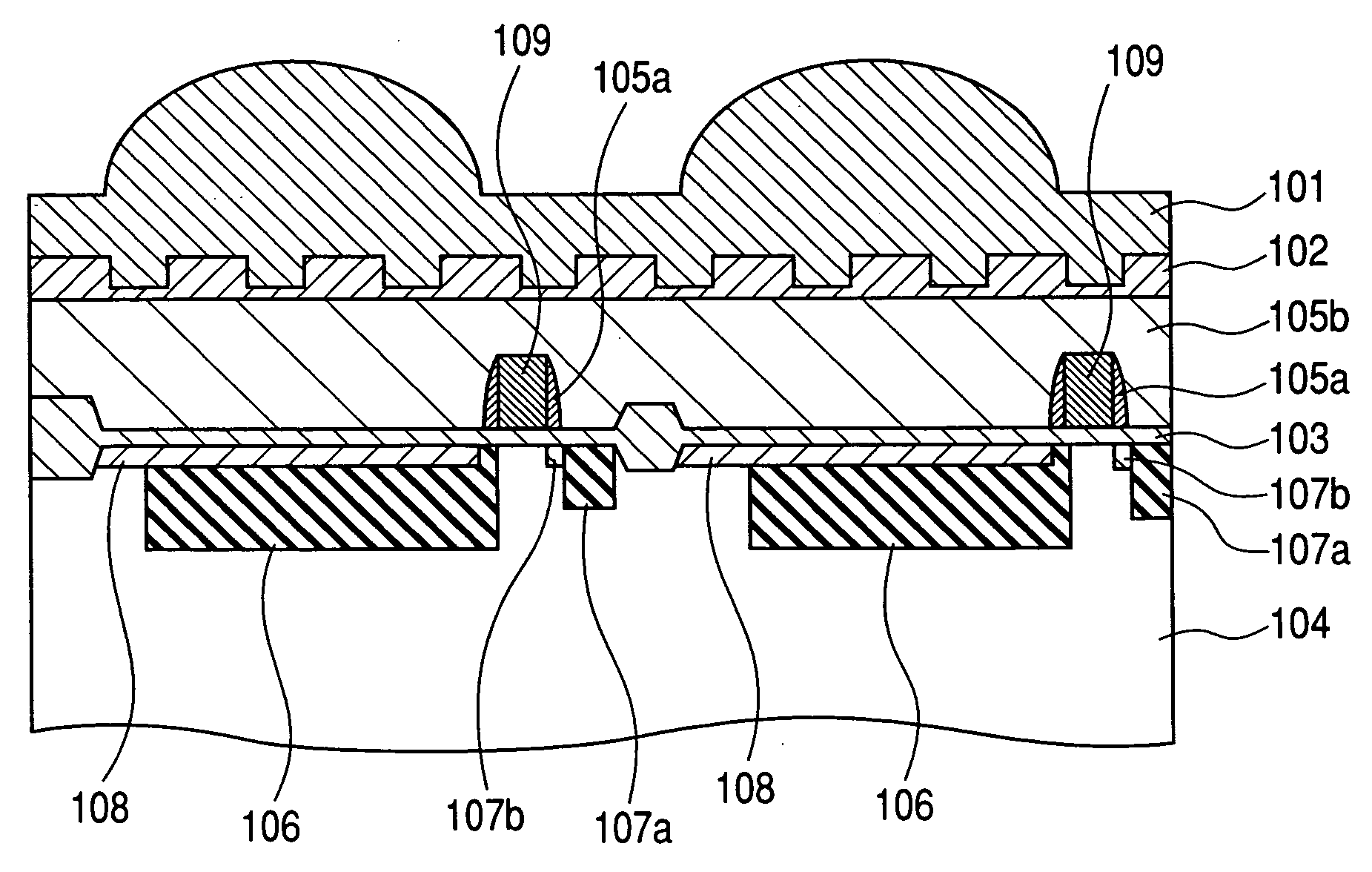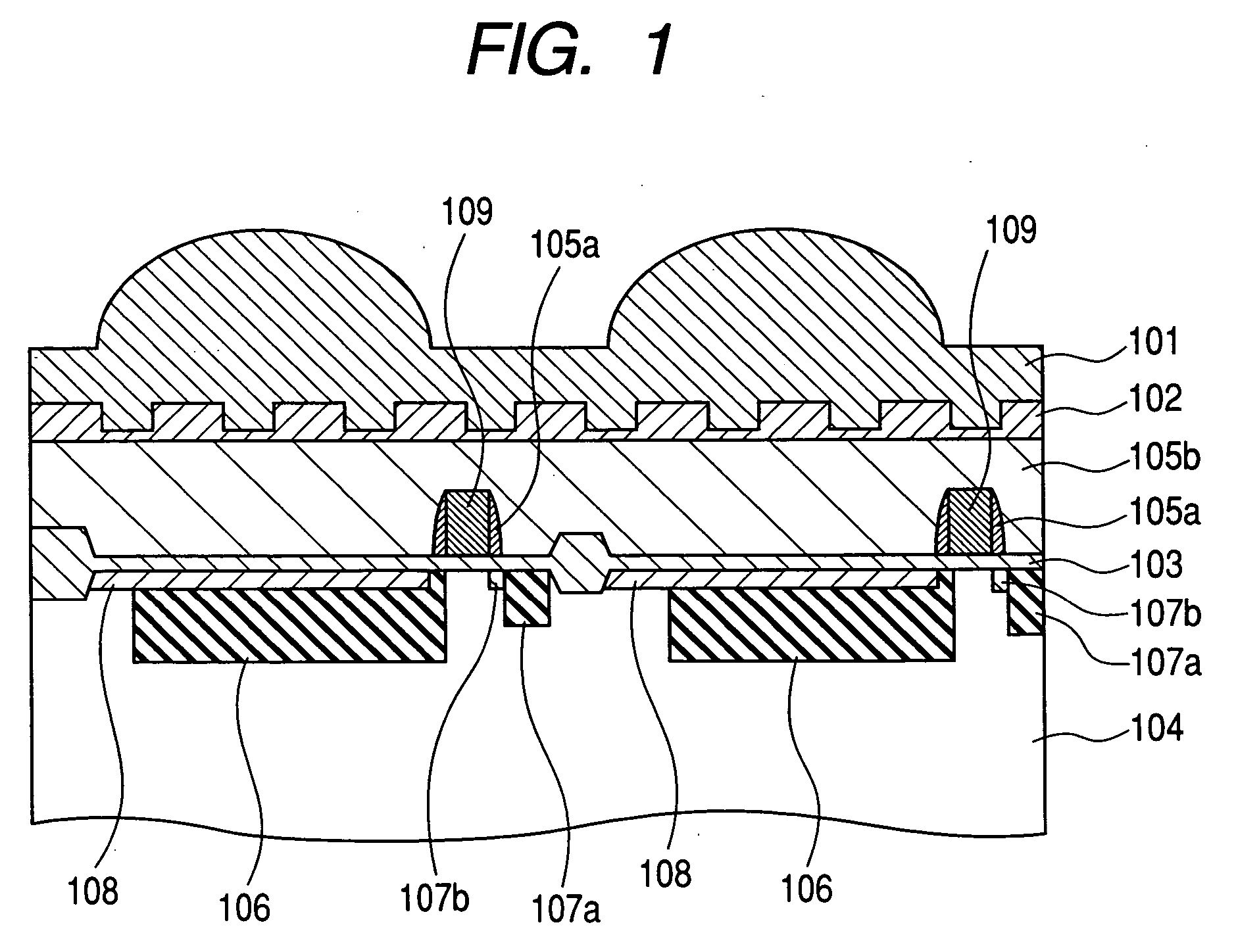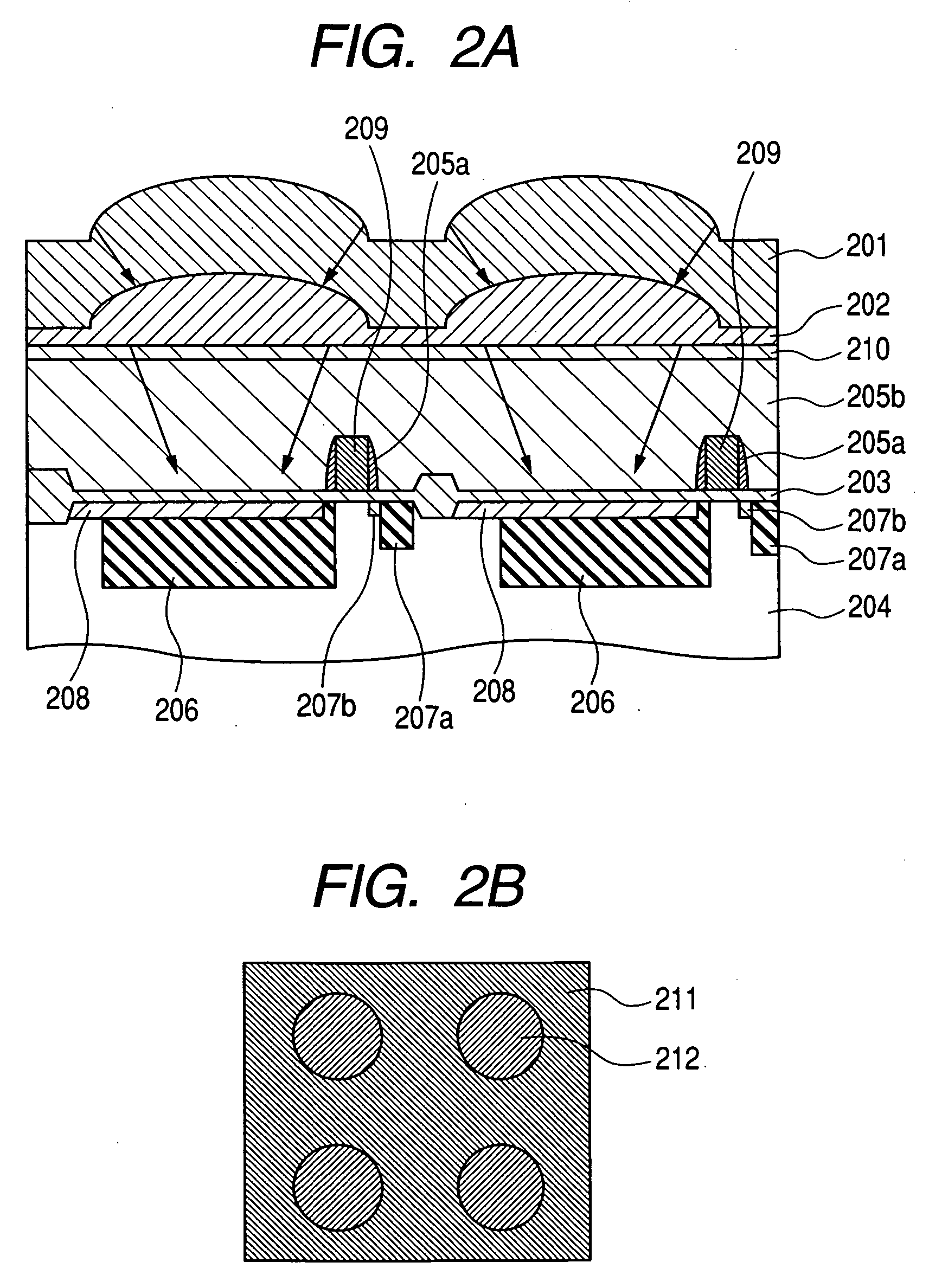Solid state imaging device, method of manufacturing same, and digital camera
a solid-state imaging and manufacturing method technology, applied in the direction of radioation control devices, television systems, television system scanning details, etc., can solve the problems of reducing sensitivity, difficult to detect the corresponding signal, and incomplete transfer of charge, so as to suppress cracks and the like, and improve the hydrogen supply capacity
- Summary
- Abstract
- Description
- Claims
- Application Information
AI Technical Summary
Benefits of technology
Problems solved by technology
Method used
Image
Examples
first embodiment
[0034] Hereinafter, description will be made of a first embodiment with reference to FIG. 1. FIG. 1 is a sectional view of a portion corresponding to two pixels in a solid state imaging device in accordance with the first embodiment of the present invention.
[0035] In the solid state imaging device, an n-type semiconductor region capable of storing signal charge (n-type storage region) 106 is formed in a p-type well 104 formed on a surface of a semiconductor substrate made of silicon. A surface p-type semiconductor region 108 with a high impurity concentration, which is electrically connected with the p-type well 104, is formed on the n-type storage region 106. These components form an embedded photodiode functioning as a light receiving element that generates signal charge. Note that the light receiving element is not limited to an embedded type one, but is preferably of the embedded type for attaining, for example, reduction of surface defects.
[0036] Further, an oxide film 103 is...
second embodiment
[0044] Description will be made of a second Embodiment with reference to FIGS. 2A and 2B. FIG. 2A is a sectional view, and FIG. 2B is a plan view.
[0045] A structure of a light receiving element is the same as in the first embodiment, and thus, detailed description thereof will be omitted. Moreover, in the second Embodiment, an embedded photodiode that is a light receiving element is constituted by an n-type storage region 206, which is formed in a p-type well 204 disposed on a surface of a semiconductor substrate, and according to a surface p-type semiconductor region 208 with a high impurity concentration.
[0046] Further, reference numeral 203 denotes an oxide film formed through thermal oxidation, and reference numeral 209 denotes a transfer electrode 209 made of polycrystalline silicon. Formed on both sides of the transfer electrode 209 are side wall films 205a each of which is composed of a residual silicon oxide film at the time of etching-back of a silicon oxide film. With th...
third embodiment
[0052] Description will be made of a third embodiment with reference to FIGS. 3A and 3B. FIG. 3A is a sectional view, and FIG. 3B is a plan view. Also in the second embodiment, an embedded photodiode functioning as a light receiving element is constituted by an n-type storage region 306, which is formed in a p-type well 304 formed on a surface of a semiconductor substrate made of silicon, and a surface p-type semiconductor region 308 with a high impurity concentration which is electrically connected with the p-type well 304. Further, a transfer electrode 309 made of polycrystalline silicon is formed on an oxide film 303 formed on the semiconductor substrate through thermal oxidation. Formed on both sides of the transfer electrode 309 are side wall films 305a each of which is made of a residual silicon oxide film at the time of etching-back of a silicon oxide film. Therefore, an LDD structure can be provided.
[0053] In the third embodiment, a silicon nitride oxide film 310, which con...
PUM
 Login to View More
Login to View More Abstract
Description
Claims
Application Information
 Login to View More
Login to View More - R&D
- Intellectual Property
- Life Sciences
- Materials
- Tech Scout
- Unparalleled Data Quality
- Higher Quality Content
- 60% Fewer Hallucinations
Browse by: Latest US Patents, China's latest patents, Technical Efficacy Thesaurus, Application Domain, Technology Topic, Popular Technical Reports.
© 2025 PatSnap. All rights reserved.Legal|Privacy policy|Modern Slavery Act Transparency Statement|Sitemap|About US| Contact US: help@patsnap.com



